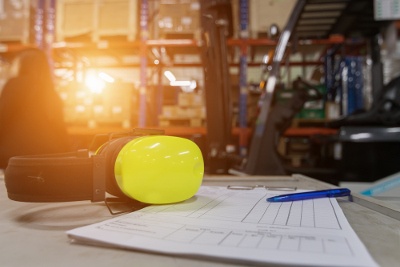 “Don’t waste your money on this product. It broke only a week after I bought it!”
“Don’t waste your money on this product. It broke only a week after I bought it!”
Would you buy a product with this review on its online listing? Maybe you’d forgive one bad review, but what if it had 10 more reviews just like it? Like most consumers, you’d probably look for a similar product from another seller instead.
As an importer, quality issues with your product can be the downfall of your business, even if you have a great product idea, a competitive marketing strategy and an enthusiastic customer base. They can lead to product returns, product recalls, bad product reviews and a damaged reputation for your brand. Any of these issues can lead customers to look to your competitors for a similar product instead of buying from you.
Some importers are quick to shift the blame for quality issues onto their suppliers. But are quality issues always the supplier’s fault? Not necessarily. Sometimes quality issues arise because the importer neglected parts of the QC process. Read on to learn how you can face product QC head-on and avoid pitfalls importers commonly fall prey to.
1. Omitting quality expectations from supplier negotiations
Would you wait until Christmas Eve to tell your friend you expect them to cook the main course for a Christmas dinner for 10 people? Probably not. So why should you wait to tell your factory about your quality standards until production is already underway for an order of hundreds of units? The most successful importers outline their quality standards in the negotiation phase when they’re choosing suppliers. This means before they set a price, place their order and issue a purchase order.
 There’s a popular belief that factories in some regions, like China, only manufacture poor quality products. But the truth is that many factories, in China and elsewhere, are quite capable of meeting your quality standards. So don’t give up on negotiating on quality prematurely. It’s a mistake to believe you’re stuck with whatever quality level your supplier considers “good enough”.
There’s a popular belief that factories in some regions, like China, only manufacture poor quality products. But the truth is that many factories, in China and elsewhere, are quite capable of meeting your quality standards. So don’t give up on negotiating on quality prematurely. It’s a mistake to believe you’re stuck with whatever quality level your supplier considers “good enough”.
Many product quality issues arise when importers fail to clarify requirements with suppliers early enough in the relationship. Clarifying requirements during negotiation ensures your supplier is aware of your specifications before they can take shortcuts on quality or make any mistakes during production.
Set a price that reflects your desired quality level
The old saying, “you get what you pay for” applies to working with overseas factories just as it does any other situation. A low price usually corresponds with lower product quality.
Factory owners are typically in business for the same main reason you probably are—to turn a profit. And when you set an unreasonably low price for your order, your supplier will likely need to “cut corners” to maintain their profit margin. “Cutting corners” can often include sacrificing your product quality in the following ways:
- Using, lower-cost alternative components for your product – e.g. substituting a locally sourced watch movement for a more expensive Swiss watch movement
- Using lower-grade materials for production – e.g. substituting a cheaper leather hide for a one that’s higher grade
- Eliminating certain production processes that require more time or other resources – e.g. forgoing galvanization for steel conduits
Most factory owners are more than happy to accommodate a lower price, if it means they win your business. But the tradeoff is often that they’ll believe you care more about paying a lower price than maintaining higher quality (related: Preventing Product Defects Starts with Negotiating with Suppliers).
Ensure quality requirements are reasonable and feasible for your supplier
Setting an unreasonably low price for your order is one concern. Another is setting unreasonably high standards for your supplier.  For example, a rookie furniture importer might expect their finished goods to have zero quality defects, which is virtually unheard of for consumer products, let alone furniture.
For example, a rookie furniture importer might expect their finished goods to have zero quality defects, which is virtually unheard of for consumer products, let alone furniture.
Evaluating your supplier’s quality capabilities before placing an order helps ensure a factory can adequately meet your quality expectations. Many importers rely on an audit of a factory’s quality management systems (QMS) to evaluate suppliers. Such an audit typically follows the internationally-recognized ISO 9001 standard and includes assessing a number of key areas, some of which include:
- Machine calibration and maintenance
- Internal quality control team
- Research & development capabilities
- Production capacity
Sometimes an audit could reveal that a supplier’s factory isn’t a good fit for your quality needs. While this means you might have to go back to the drawing board and find a new supplier, it’s better than dealing with an entire order that doesn’t meet your specifications.
Set expectations for accountability to pre-shipment inspection results
Some importers place an order with a supplier and then announce later during production that they want pre-shipment inspection. This can create problems if the supplier resists your requests for inspection, which is more likely when hiring an independent third party to inspect.
It’s often much better to make your intentions of inspecting the goods clear before working with a supplier. In this way, your supplier can anticipate and make time for external inspection, rather than possibly making excuses to avoid it.
The same is true when trying to hold a supplier accountable by asking them to pay financial penalties for failing inspection or shipping substandard goods. As the customer, it’s your responsibility to clarify these and other quality requirements with your supplier upfront. Remember, you have significantly more bargaining power before making payment for an order. Once you’ve made payment, your supplier typically holds the power.
2. Proceeding with mass production without first reviewing and approving a product sample
Product samples, sometimes referred to as "golden" samples, can be invaluable in ensuring your supplier understands your requirements. They reflect your supplier’s understanding of what you want, so they’re a great way to ensure your product requirements are clear.
 Can you predict how a factory will manufacture your product just by looking at a photo of a sample? Probably not.
Can you predict how a factory will manufacture your product just by looking at a photo of a sample? Probably not.
When it comes to reviewing a product sample, nothing beats being able to actually hold it in your hands and check its physical characteristics. For example, if you’re importing wooden dining room chairs, you may need to evaluate the quality of a lacquer finish applied to the wood. Or maybe you’re manufacturing high-thread-count bed sheets and need to check the fabric quality by hand. There are also countless other examples of quality checks you might need a certified lab to perform.
It’s not feasible for most importers to evaluate hundreds or thousands of units by hand themselves. But almost all importers can benefit from checking just one or two product samples to approve before mass production begins.
Identify quality defects in product samples before production
Ideally, there should be zero quality issues in your golden sample. Golden samples are intended to be near-perfect representations of your desired product. They should be comparison models that factory staff and inspectors can check against production units for conformance to your requirements.
Pre-production samples give you the opportunity to identify any quality defects and other issues before they affect the finished goods. Any issues you don’t discover until after production is finished can lead to consequences such as having to:
- Accept substandard goods and hope your customers can accept them too
- Ask your supplier to rework defective units and risk the possibility of new defects being created from this added handling
- Repeat production from scratch and possibly arrange product destruction for the entire first order
Some importers request samples before choosing a supplier as a way to evaluate their manufacturing capability. Others wait until after they’ve settled on a supplier. Regardless, reviewing and approving a sample before mass production begins helps you prevent and limit quality defects before they arise in your finished products.
Clarify product requirements with a product sample to avoid further misunderstandings
Don’t assume factory staff will immediately understand your written specifications in a PO or quality document. Sometimes a misunderstanding can pop up where you never expected due to a language or cultural barrier (related: Why You Can’t Assume Chinese Suppliers Always Understand Requirements).
 You can think of product samples as a “test run” for the factory to interpret your product requirements, since it’s their first chance to actually put your specifications into practice. You might have to go through a number of product samples before you arrive at an approved, golden sample.
You can think of product samples as a “test run” for the factory to interpret your product requirements, since it’s their first chance to actually put your specifications into practice. You might have to go through a number of product samples before you arrive at an approved, golden sample.
But remember that product samples are often made by factory design and engineering departments using different personnel and techniques than those used in mass production. So product samples alone aren’t sufficient to check conformance to your requirements. This brings us to our third product QC pitfall.
3. Forgoing quality control inspection before shipment
Quality control inspection is one of your best options for catching quality issues before your products are loaded onto a ship or plane headed across the world. If you wait to address product defects after receiving your shipment, you could be stuck with thousands of dollars’ worth of unsellable goods. Whereas you can save significant money in wasted product by inspecting your goods and finding and addressing any problems before shipping.
Some importers might trust their supplier’s own internal quality controls. But there are a number of reasons importers usually end up turning to a third-party or full-time inspection staff to check their products before shipment (related: Why Most Importers Don’t Rely on Factory QC Staff for Inspection).
Why external QC inspection is often best for identifying quality issues
While your chosen supplier may be capable of manufacturing to your standards, it’s often best to insist on external inspection, rather than relying on the factory’s own staff. Factory staff who inspect the products they manufacture are often inherently biased.
 Confirmation bias is the tendency to search for, interpret and favor information in a way that confirms one's preexisting beliefs. How many times have you sought a second opinion and discovered an issue that you had overlooked yourself? It helps to find fresh eyes to assess something you’re intimately familiar with.
Confirmation bias is the tendency to search for, interpret and favor information in a way that confirms one's preexisting beliefs. How many times have you sought a second opinion and discovered an issue that you had overlooked yourself? It helps to find fresh eyes to assess something you’re intimately familiar with.
This confirmation bias can result in factories having a slightly lower quality standard than you desire. For example, a factory QC inspector might consider a scratch on a watch face less than 1mm to be a minor defect, knowing that replacing the glass on the watch would be time-consuming and require extra materials. But you might consider the scratch to be a major defect, knowing it would affect the visual appeal of the watch and raise the chance of a customer returning the product.
You’re also likely to receive little or no reporting from your supplier about quality when leaving inspection in their hands. You’ve given them free reign to control the quality process. So they won’t likely feel compelled to report on quality issues to you. With this lack of transparency, there’s no guarantee the factory will actually address quality issues, even if they do notify you about them.
Hire inspectors that put your interests first
A pre-shipment inspection is the bare minimum for importers in the consumer goods industry who want to compete in their market with quality goods. In contrast to internal QC, external inspectors can use your QC documents to check your products according to your standards and report on all quality issues found in the inspected sample.
Whether sending your own staff or hiring a third-party QC provider to check your products, inspectors should act as your right-hand assistants in the factory by representing your interests to the factory and reporting honestly on the quality of your goods. Unlike factory QC staff, your inspectors should have no competing interests outside of your inspection standards. Integrity policies are helpful to maintain an inspector’s objectivity and ensure factories don’t try to influence their reporting with bribes or other perks.
4. Using outdated QC documents as a guide for production and inspection
Have you ever heard the popular saying, “Insanity is doing the same thing over and over and expecting different results”?
When quality problems repeatedly slip through inspection, it’s often because factory and inspection staff continue to refer to the same outdated QC documents.  You can’t just assume your supplier will adjust production processes or quality standards based on previous orders. Instead, you’ll need to continually update QC documents to reflect any known quality issues and changes to your product.
You can’t just assume your supplier will adjust production processes or quality standards based on previous orders. Instead, you’ll need to continually update QC documents to reflect any known quality issues and changes to your product.
If your QC documents are inaccurate, incomplete or hard to decipher, chances are you’ll continue to experience the same kinds of misunderstandings with factory staff and QC inspectors. Updating your QC documents, like your QC checklist, for future inspections helps you avoid issues that have previously derailed your inspections.
What information should you continually update in product QC documents?
Sometimes you might not be aware of all of the possible quality issues for your product, especially during your first production run. Some professional third-party inspection companies can help you create quality control inspection criteria based on common checks and tests for your product type. But you’ll likely discover some unanticipated quality issues or new inspection criteria after a few production runs.
Information you may need to repeatedly update from one inspection to the next includes any:
- New known quality issues with your product – e.g. impressions left on towels by embroidery pressing
- Changes to your desired inspection scope and standards – e.g. increasing the inspection level from GI to GII or decreasing the AQL of 2.0 to 1.5 for major defects
- Adjustments to product dimensions, components or materials required – e.g. changing from single stitching to chain stitching on a pair of pants
- New on-site testing requirements, including required testing equipment, the proper testing procedure and who should provide the equipment
Especially when using a type of acceptance sampling for inspection, most importers will accept a certain number of defects in their order, rather than expecting zero defects. But the trick to successful product QC comes in notifying your factory and inspectors which types of defects are acceptable and in what quantity. Some importers choose to adjust their inspection level from one inspection to the next based on previous inspection results.
Experienced importers aren’t off the hook with updating their QC documents either. If you don’t include the information in your inspection criteria, you leave the door open for the factory to take shortcuts on quality. You might be susceptible to a phenomenon known as “quality fade” where your product quality gradually deteriorates over time.
Updated QC documents improve inspection efficiency and reporting
An updated QC checklist also improves the efficiency of inspection and reporting. With updated information, it’s easier for inspectors to tailor their reporting style to your needs and provide you with a report that addresses all your quality checkpoints. This helps you:
- More quickly review inspection results
- Limit the need to ask for clarification on any points of confusion after receiving the report; and
- Issue approval to the factory to ship or get started on rework immediately, helping to eliminate delays
Keeping your QC documents up-to-date also ensures that your inspections and reporting are consistent over time, even if your inspector changes. If you need to train new inspectors, they can understand the proper procedure much faster with materials that are easy to reference.
Conclusion
If you’re waiting to discuss your quality standards with your suppliers until production begins, you might already be fighting a losing battle. And if you wait to fix issues when you find quality defects after production is finished, you’re already playing catch up. But worst of all, if you wait to address quality issues after you receive defective goods, any corrective actions will likely be difficult and very expensive.
Making assumptions is one of the common reasons importers are caught off guard by product QC issues. Some importers assume the factory understands their requirements, will inspect for quality issues and take note of any quality issues for future orders. Never assume. You can’t just pay attention to product quality at the end of production. You need to prepare requirements and set expectations with your supplier at every stage of the importing process to avoid delays and product defects.
If you can avoid these four pitfalls, you’re well ahead of most importers and will likely keep, and even grow, your number of happy customers.
What product QC issues have caught you off-guard before? How did you prevent them from reoccurring? Share your experiences in the comment section below!







